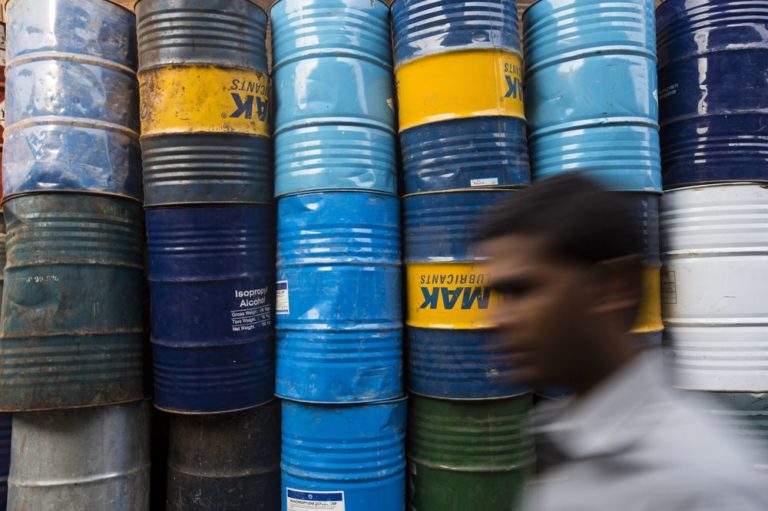Climbing Oil Prices Put India’s Benign Inflation Outlook at Risk

A rebound in oil prices poses a risk to India’s benign inflation expectations that last week allowed the central bank to deliver its second rate cut of 2019.
With crude at a five-month high, many investors are turning less confident about the Reserve Bank of India’s pace of monetary easing, though a slowdown in economic growth and subdued inflation still support an easing bias.
The low headline print gave Governor Shaktikanta Das and the rate-setting panel the space to cut rates by 25 basis points each in February and April to support the economy. Some economists see room for one more reduction provided food and fuel costs don’t spike. Data on Friday showed headline inflation quickened to a five-month high of 2.86 percent in March from 2.57 percent in February.
The RBI last week cut its inflation forecast to a range of 2.9 percent to 3 percent in the April-September period, compared with a February projection of 3.2 percent to 3.4 percent, while seeing price growth this year within its 4 percent medium-term target. It separately cut economic growth forecast to 7.2 percent for the year that began on April 1, down from 7.4 percent previously.
“The recent rise in crude prices, if sustained,” could pose a challenge to both economic growth and inflation outlook, said Dharmakirti Joshi, chief economist with Crisil Ltd. in Mumbai.
Forecast for Brent, the benchmark for half the world’s oil, has been lifted on the back of production cuts, and the RBI sees prices being pushed up further should the U.S.-China trade tensions be resolved swiftly. The two sides are nearing a trade deal, with talks aimed at clinching one within the next month continuing.
A recent study by the central bank showed a $10 rise from $65 a barrel will lead to a 49 basis points increase in headline inflation, while a similar increase from $55 a barrel would give around a 58 basis-point boost to consumer prices.
Oil’s charge higher has also offset any gains from a rising currency on imported inflation. The rupee climbed 2.3 percent against the dollar in March, making it the best performer in Asia. The currency is up more than 7 percent from its October low, leading to a view among economists like Kotak Mahindra Bank Ltd. Economist Upasna Bhardwaj that some of the impact from the rising currency could help ease inflation.
A 2018 working paper, co-authored by Monetary Policy Committee member Michael Patra, showed that a 1 percent change in the exchange rate translates into a 15 basis-point move in headline inflation over a period of five months.
“We see room for 25 basis points of rate in 2019 given the benign near term headline trajectory,” Bhardwaj said. “Nonetheless, the trajectory on crude oil price increase needs to be watched closely.”
Still, others see the rupee’s role being countered by oil.
“It appears on balance that the recent hardening of oil prices would have negated the impact of rupee appreciation to a large extent,” said Gaurav Kapur, chief economist at IndusInd Bank Ltd. in Mumbai.